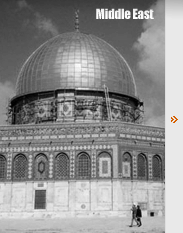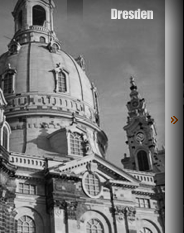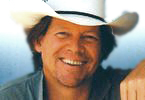
|

|

|

|

|
 9-11 Archive 2005
9-11 Archive 2005 How the Controlled Press Avoids 9-11 Truth
How the Controlled Press Avoids 9-11 Truth

How the Controlled Press Avoids 9-11 TruthAugust 25, 2005 Rather than face the uncomfortable facts presented by William Rodriguez, a key eyewitness and survivor of 9-11, the controlled press simply avoids him because his testimony exposes the lies of the official version. SCHAUMBURG, Illinois - In amazement and awe audiences hang on every word of William Rodriguez when he speaks about his experiences of 9-11. The compelling testimony of the former custodian of the World Trade Center, in which he clearly describes a huge explosion occurring in the basement of the North Tower seconds before the plane struck the building, demolishes the government version of events as completely as the explosions that pulverized the twin towers. The 40-minute testimony of William Rodriguez presents listeners with an inescapable dilemma. Either Rodriguez is making it all up or the official explanation of what caused the destruction of the 110-story steel and concrete towers is a pack of lies. Because the corporate-controlled press cannot square the Puerto Rican janitor's testimony with the official version, they simply avoid him entirely. To pursue the truth in a public forum is why I invited Rodriguez to participate in a 9-11 Symposium in Schaumburg, a suburb of Chicago, home of the world's first steel-girder construction skyscraper. Dr. Gene Corley, structural engineer and team leader of the Federal Emergency Management Agency (FEMA) report on the destruction of the WTC, was invited well in advance to participate in the symposium and defend the fire-induced gravity collapse theory. Corley, however, chose not to attend. As team leader of the official engineering study, about the damaged towers Corley wrote: "absent other severe loading events such as a windstorm or earthquake, the buildings could have remained standing in their damaged states until subjected to some significant additional load. "The large quantity of jet fuel carried by each aircraft ignited upon impact into each building. A significant portion of this fuel was consumed immediately in the ensuing fireballs. The remaining fuel is believed either to have flowed down through the buildings or to have burned off within a few minutes of the aircraft impact. The heat produced by this burning jet fuel does not by itself appear to have been sufficient to initiate the structural collapses," Corley wrote in the executive summary of the World Trade Center Building Performance Study. According to Corley, neither the impact of the planes nor the burning fuel caused the towers to collapse. "Over a period of many minutes," Corley wrote, secondary fires, such as burning office supplies and furniture set alight by the burning fuel, "induced additional stresses into the damaged structural frames while simultaneously softening and weakening these frames. This additional loading and the resulting damage were sufficient to induce the collapse of both structures," his FEMA-sponsored study concluded. Corley, a senior vice president with Construction Technology Laboratories in Skokie, has his office 20 miles from the Schaumburg library where the 9-11 Symposium was held on Sunday, August 21. Corley told me that he is quite willing to discuss the findings of the official report, but during the entire month prior to the event he failed to respond to several written invitations. I called Corley's office two days before the event and was told he would be in Memphis. Corley played a key role in authoring similar technical reports about the Pentagon, the Alfred P. Murrah Federal Building in Oklahoma City, and the Branch Davidian compound disaster in Waco, Texas. In addition to Rodriguez and Corley, other researchers were invited to participate in the symposium. Dave vonKleist, host of The Power Hour radio show and producer of the video In Plane Site, traveled from Versailles, Missouri, and Phil Jayhan, author of the letsroll911.org website, came from McHenry, Illinois. Although the news departments of every major media network in the Chicago area were informed well in advance of the event, the only news outlet to attend was the Spanish-language Univision television channel, which interviewed Rodriguez for the nightly news. Thus, while Rodriguez, who has been honored at the White House five times, delivered his testimony to a spellbound audience of some 170 individuals, not a single reporter from the English-language media or the Chicago Tribune bothered to attend. The suburban Daily Herald told me that they "lacked the resources to cover the event," and featured a front-page story about adults playing dodge-ball the following morning. Peter Hernon, chief of the Chicago Tribune's Schaumburg office told me that he was unaware of the event although his bureau had received numerous notices by post, fax, email and phone. The Tribune, whose bureau is only two miles from the library, had even published an announcement of the symposium the Friday before the event. Likewise, Richard Wronski, news desk editor on the day of the event, said he had not heard of the event. Hernon and Wronski appear to have been less than completely honest because a fellow editor at the Schaumburg office told me two days before the symposium that while the paper was well aware of the event, it had decided not to cover it. Puzzled by these responses, I asked N. Don Wycliff, Public Editor at the Tribune, how the decision was made not to cover what was probably the most significant 9-11 event ever held in the Chicago area. The Tribune Company is one of America's largest media networks owning print, television and radio outlets in the nation's three largest markets of New York City, Chicago, and Los Angeles. I told Wycliff about how Rodriguez had returned to the burning tower several times and led firefighters up the stairwells opening the locked fire-doors with his master key allowing many trapped workers to escape. Wycliff then asked what Rodriguez had to say that might add to the public understanding of what happened on 9-11. Told of the tremendous explosion that Rodriguez and others felt in the basement of the North Tower at 8:46 a.m., before the plane hit the building, Wycliff said, "The fact that 3 or 4 years later this guy comes out with these revelations doesn't strike me as news." Rodriguez, however, has been saying the same thing since he was pulled from under a fire truck buried under the rubble of the North Tower. His testimony to the official 9-11 commission, however, was not included in the final report. "I would have made the same decision," editor Wycliff said about why the Tribune did not cover the symposium. "I have 10 guys and fifteen stories. This is a story I'm not going to bother to cover." So rather than report on the visit of William Rodriguez, a 9-11 survivor and true hero, on the day of the symposium the Chicago Tribune began a series of lengthy articles about Oreo cookies. It should be noted that two of the Tribune Company's corporate directors have served as director, president or chief executive officer with Kraft Foods, Inc., the parent corporation behind Oreo cookies.
|
©2010 Christopher Bollyn | Sitemap | christopher@bollyn.com

